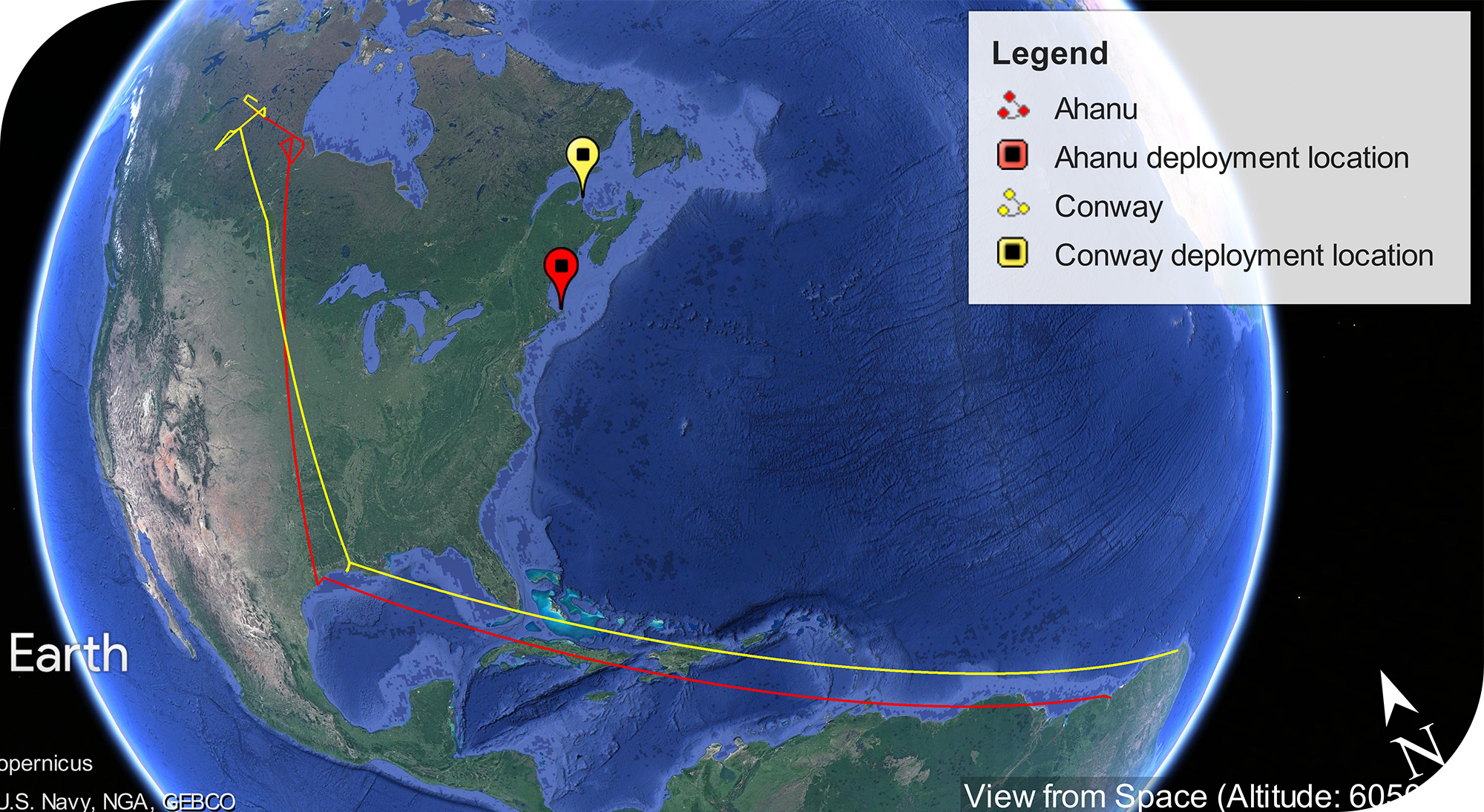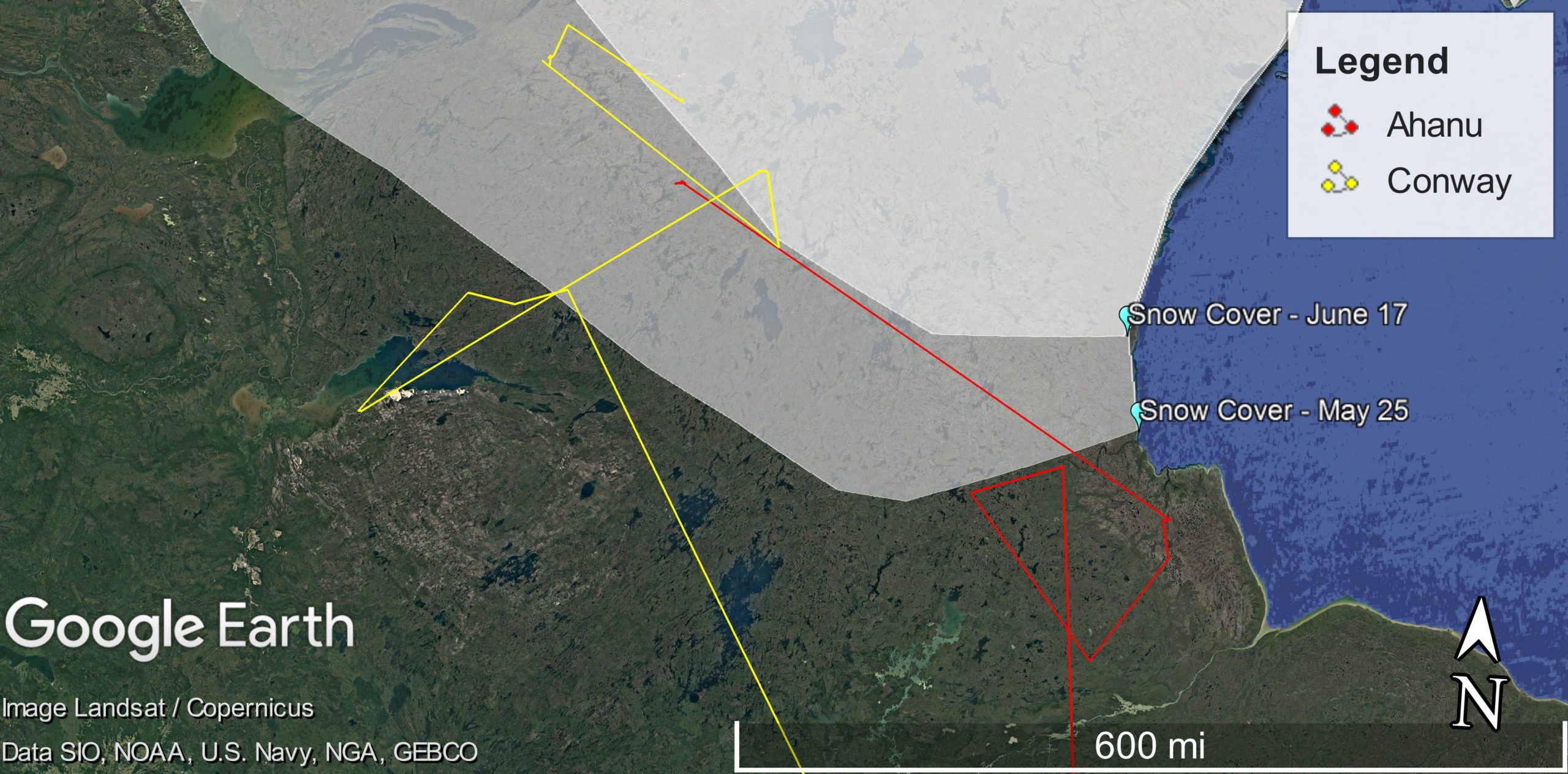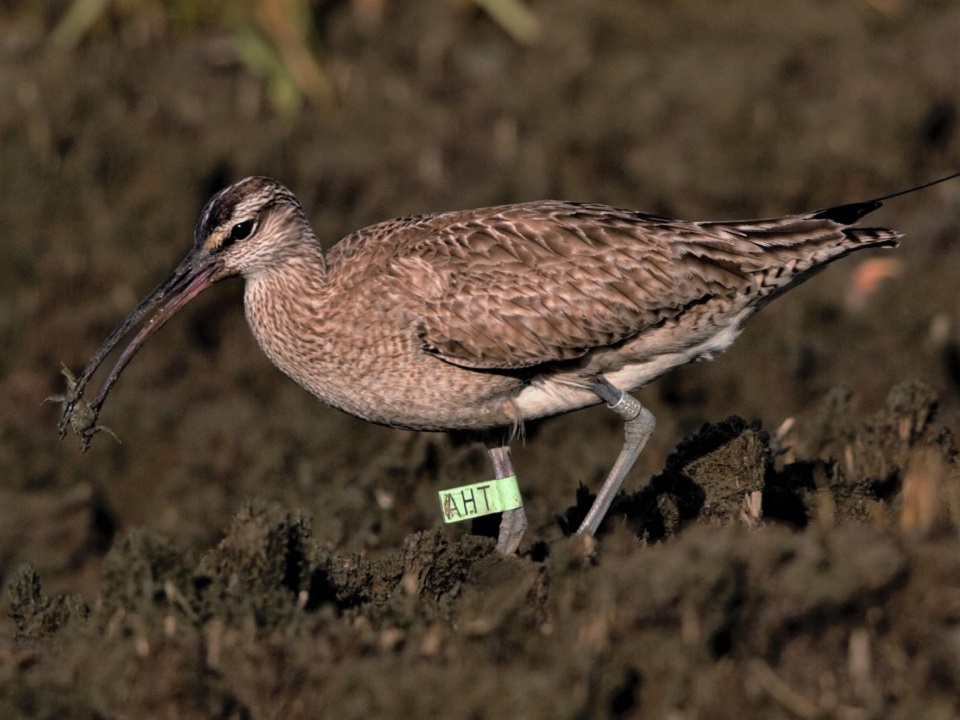Whimbrel migration is in full swing! From July through late September, Whimbrel migrate southward from their Arctic and sub-Arctic breeding grounds and some spend up to a month with us along our coast. While in Massachusetts, Whimbrel spend almost all of their time in the saltmarshes feeding on fiddler crabs—an important staple in their diet. After replenishing their energy reserves, Whimbrel in Massachusetts will typically make a non-stop, trans-oceanic flight to their wintering grounds in the Caribbean Islands or all the way to the north coast of South America.
Manomet’s Shorebird Recovery team is excited to share an update on what “our” satellite-transmittered Whimbrel have been up to over the last few months. These birds’ stories continue to help us unravel the mysteries of Whimbrel migratory pathways and habitat needs, both on a local and hemispheric level. Although these birds have been transmitting for multiple years now, this particular update focuses on the Spring 2020 period, where we had some dramatic moves by multiple birds.
To start off, we would like to acknowledge the termination of one of our bird’s tracking devices—Sachem, a juvenile tagged with a 5 g. solar-powered satellite transmitter in Wellfleet, Massachusetts, in September 2017. Sachem ceased transmission in May in Venezuela just before an expected flight northward, after nearly 1,000 days of active transmission. We don’t know whether the transmitter failed, or whether the bird died. Despite our disappointment, Sachem provided the longest transmission to date for a juvenile Whimbrel, and shed light onto the behavior of Whimbrel during their first years of life. We look forward to analyzing the thousands of data points Sachem provided, and incorporating it into a peer-reviewed publication on juvenile Whimbrel behavior on the non-breeding grounds.
Meanwhile, we are still keeping tabs on two active birds. Ahanu, tagged as an adult in Wellfleet in September 2018, has made a full migratory circuit. Although not included in previous updates, a second Whimbrel, Conway, is also being tracked. Conway was tagged in New Brunswick by a team of project partners in August 2016. Since that date, Conway and Ahanu have flown remarkably similar paths, both wintering in Brazil, staging on the Gulf coast in the spring, and breeding within a few hundred kilometers of each other in Canada.






 Back to all
Back to all


